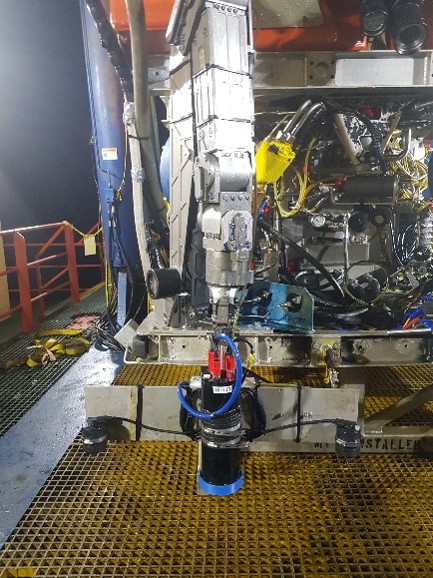Abyss Solutions has been working with the University of Sydney to test a next-gen robotic arm which could go from terrestrial energy operations to the Moon and beyond.
- This project is the first launch into space for Abyss Solutions, which has locations in Sydney, Islamabad, Aberdeen and Houston. Abyss specialises in machine learning, AI, and computer vision.
- This technology detects faults among critical assets in various industries.
- The company has engineered an AI solution to drive autonomous operations. Abyss is now applying those technologies beyond uses on Earth.
- ‘The project rationale was to test the commercial and technical feasibility of in-situ robotic perception and intervention using a robotic arm in space environments,’ said Abyss Solutions’ Head of Research and Development Dr Lashika Medagoda.
- ‘This requires autonomy due to operation with limited bandwidth, where remote control would be difficult to rely upon.’
- That meant designing and developing an unmanned prototype robotic sensor and intervention manipulator package.
Abyss Solutions worked alongside the University of Sydney. They determined how to use this technology for applications in space. They also explored potential robotic intervention strategies.
Project Status
Current
Project outcomes and benefits
- ‘Among several other industries, Abyss has many ongoing projects in the energy sector, where fine manipulation couples with our existing inspection products,’ Dr Medagoda said.
- ‘We’ve previously deployed a camera on a robotic arm attached to a subsea vehicle and used the robotic arm to clean the underwater asset prior to inspection.’
- ‘We are investigating the usage of underwater manipulators, such as those developed by Reach Robotics and are working with ground robotic platform companies, including Boston Dynamics, Anybotics, and Taurob, which are looking to deploy their technologies in the energy sector and have various intervention robotic arms.’
- There were many rounds of testing and configurations. The collaboration created a business case for further technology research and development. They also increased the technology readiness level for a prospective demonstrator mission.
- According to Dr Medagoda this would include ‘repair, refuel, replace, assembly, debris capture’. The technology could perform ‘general autonomous manipulation tasks’ on satellites.
- ‘[We are looking] to enable the semi-autonomy and autonomy of the robotic arm to show in-orbit servicing and logistics technology demonstrators,’ Dr Medagoda said.
- ‘Ultimately, we hope to package the automation software with the robotics hardware and satellite providers that can be utilised across the in-orbit servicing industry.’
Connection to the Agency's strategic framework
- Opening doors internationally
- Increasing national capability
- Robotics and automation on Earth and in space
Collaboration
University of Sydney


